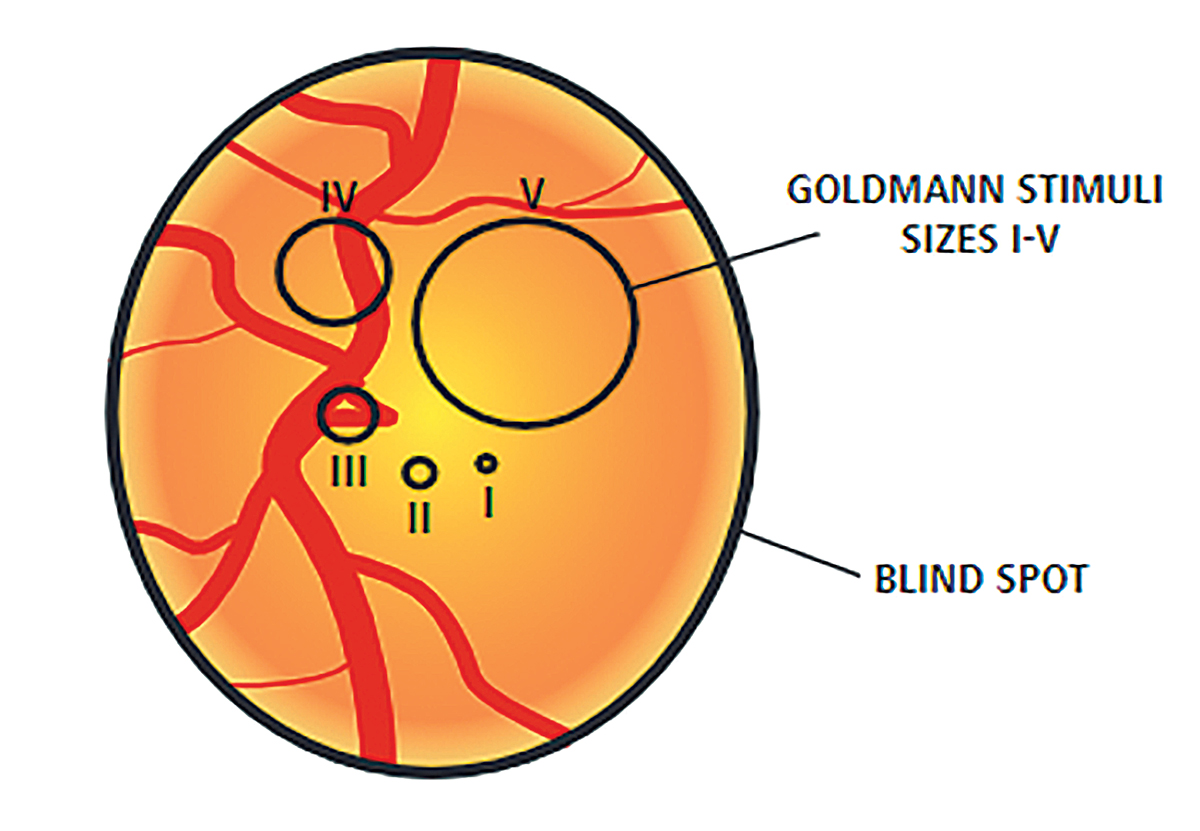 |
| Using a moving stimulus for perimetry increases sensitivities, researchers noted in this study. Photo: Anders Heijl and Vincent Michael Patella. Click image to enlarge. |
It’s been shown that perimetric sensitivities below -20dB are unreliable due to excessive variability. Increasing stimulus size to increase detectability extends this dynamic range, allowing testing for more severe glaucoma; however, larger stimuli overlap multiple nerve fiber bundles and may miss smaller defects. At the 2022 ARVO meeting in Denver, researchers proposed instead using moving stimuli to increase detectability and hence increase the dynamic range of perimetry in glaucoma.
A total of 152 participants with glaucoma or suspected of having glaucoma were tested, with 52 undergoing retesting six months later. A Size V moving stimulus was designed to travel parallel to the average nerve fiber bundle orientation at each location, with speed proportional to local magnocellular ganglion cell spacing. Overall, 34 locations across the visual field were tested with moving and static stimuli, using an otherwise identical Zippy Estimation by Sequential Thresholding seen and not seen algorithm on a clinical perimeter.
The 152 participants tested had an average mean deviation of -3.1dB from standard perimetry (interquartile range: -3.7dB to -0.3dB). Sensitivities using moving stimuli were 1.8dB higher; this difference increased with damage and eccentricity. Test-retest limits of agreement among the 52 retested eyes were narrower for moving stimuli (-6.3dB to +6.7dB) than static stimuli (-12.7dB to +7.9dB), and test-retest variance was significantly smaller. Over half (53%) of the participants stated preferring the moving stimulus vs. 24% who preferred the static stimulus.
“Using a moving stimulus for perimetry increases sensitivities, and hence locations stay within the dynamic range longer, allowing reliable testing at locations with more severe damage without the problems caused by increasing stimulus size,” the study authors concluded. “Since stimulus speed is a continuous variable, a clinical test could either use moving stimuli at all sensitivities or could increase speed proportional to loss ensuring that early detection would be unaltered.”
Original abstract content © Association for Research in Vision and Ophthalmology 2022.
Gardiner S, Mansberger S. Using moving instead of static stimuli to extend the dynamic range of perimetry. ARVO 2022 annual meeting. |


